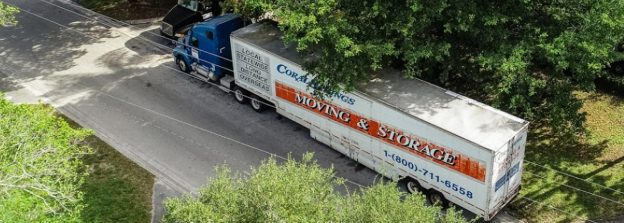Moving can be a stressful process, regardless of the distance or size of your relocation. During this transition, finding strategies to simplify your move can be incredibly helpful. One of the best ways to improve your relocation process is to invest in a storage unit.
For the low cost of renting storage space for a few months, you can make your move more organized, less stressful, and overall more enjoyable. How can a storage unit help you throughout your relocation? What benefits can you unlock with this space? Learn how this storage solution can make your move feel infinitely easier in this article.
-
Enhanced Organization (less clutter)
One of the biggest challenges of moving is dealing with excess clutter. A storage unit provides an excellent way to pack items in advance and keep them out of the way, reducing the chaos in your home. Gradually packing non-essential belongings and placing them in storage ahead of your move makes the process more manageable and efficient. Seasonal items, books, decorative pieces, and rarely used furniture can be stored early, allowing you to focus on the essentials in the final weeks before moving day.
This approach not only declutters your living space but also helps create a more structured packing process. You’ll have fewer boxes to navigate around your home, making it easier to clean, sort, and label everything properly before the final move. Storage space allows you to pace yourself and avoid last-minute packing chaos.
-
Simplified Decluttering
Moving is the perfect opportunity to declutter and reassess what you truly need. Instead of hauling everything to your new home or office, consider using storage as a way to sort through your possessions gradually. This approach prevents last-minute, rushed decisions about what to keep, donate, or discard without feeling pressured by moving deadlines.
-
Security and Safety
A secure storage unit ensures that your valuable and fragile items are protected throughout the moving process. Storage facilities offer climate-controlled units, surveillance systems, and secure access, reducing the risk of damage or theft. This is especially helpful if you are moving long-distance, undergoing a delayed transition, or need to store high-value items such as antiques, artwork, or electronics.
Additionally, keeping extra items in storage minimizes the chances of accidents or damage in your current home. Boxes stacked too high or fragile items left unprotected can lead to breakages. A storage unit allows you to keep these items safe until they are ready to be unpacked and placed in their new location.
-
Increased Flexibility
Moving doesn’t always go according to plan. Whether you’re dealing with closing delays, lease overlaps, or renovations in your new home, having a storage unit gives you greater flexibility with the timing of your move. If your new place isn’t ready, you won’t have to worry about scrambling for solutions. Instead, you can store your belongings until you’re ready to move them in, reducing unnecessary stress and making the transition smoother.
Storage solutions also provide flexibility in terms of access. Many storage facilities offer 24/7 access, allowing you to retrieve items whenever needed. This is extra useful if you need to stage a home for sale or gradually move into your new space instead of transporting everything in one go.
-
Decreased Stress
Moving is the perfect opportunity to declutter and reassess what you truly need. Instead of hauling everything to your new home or office, consider using storage as a way to gradually sort through your possessions without feeling pressured by moving deadlines. This approach prevents last-minute, rushed decisions about what to keep, donate, or discard.
-
Easier to Settle In
A secure storage unit ensures that your valuable and fragile items are protected throughout the moving process. Many storage facilities offer climate-controlled units, surveillance systems, and secure access, reducing the risk of damage or theft. This is especially helpful if you are moving long-distance, undergoing a delayed transition, or need to store high-value items such as antiques, artwork, or electronics.
Additionally, keeping extra items in storage minimizes the chances of accidents or damage in your current home. Boxes stacked too high or fragile items left unprotected can lead to breakages. A storage unit allows you to keep these items safe until they are ready to be unpacked and placed in their new location.
-
Opportunity for Long-Term Use
Moving doesn’t always go according to plan. Whether you’re dealing with closing delays, lease overlaps, or renovations in your new home, having a storage unit gives you greater flexibility. If your new place isn’t ready, you won’t have to worry about scrambling for temporary solutions. Instead, you can store your belongings until you’re ready to move them in, reducing unnecessary stress and making the transition smoother.
Storage solutions also provide flexibility in terms of access. Many storage facilities offer 24/7 access, allowing you to retrieve items whenever needed. This is particularly useful if you need to stage a home for sale or gradually move into your new space instead of transporting everything in one go.
Simplify Your Move with a Storage Unit
By using a storage unit for your relocation, you can experience a streamlined, simplified moving process. Seeking secure storage space in South Florida? Count on Coral Springs Moving & Storage, South Florida’s trusted family-owned movers since 1974.
Coral Springs offers high-quality moving, packing, and storage solutions, allowing your relocation to feel like a breeze. Our team of moving professionals is here to help you throughout the process, tailoring our services to meet your specific needs.
Request a free quote online or call us today to learn more about our rates.









